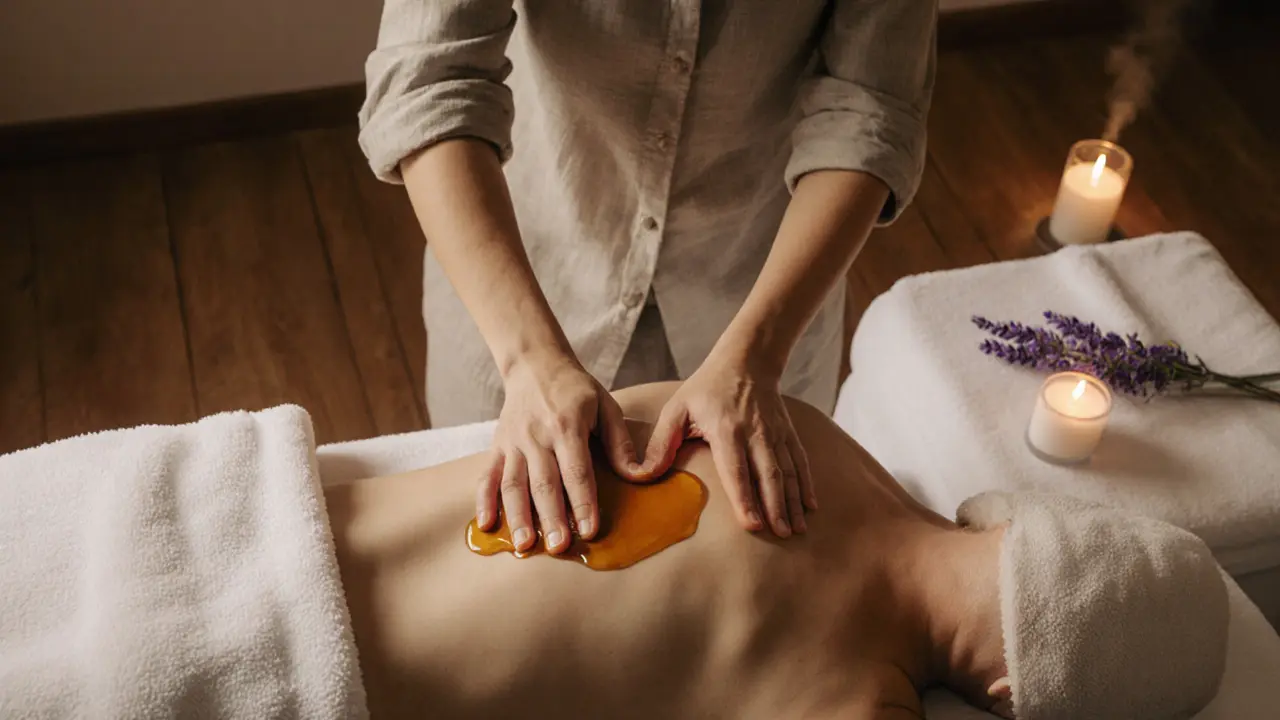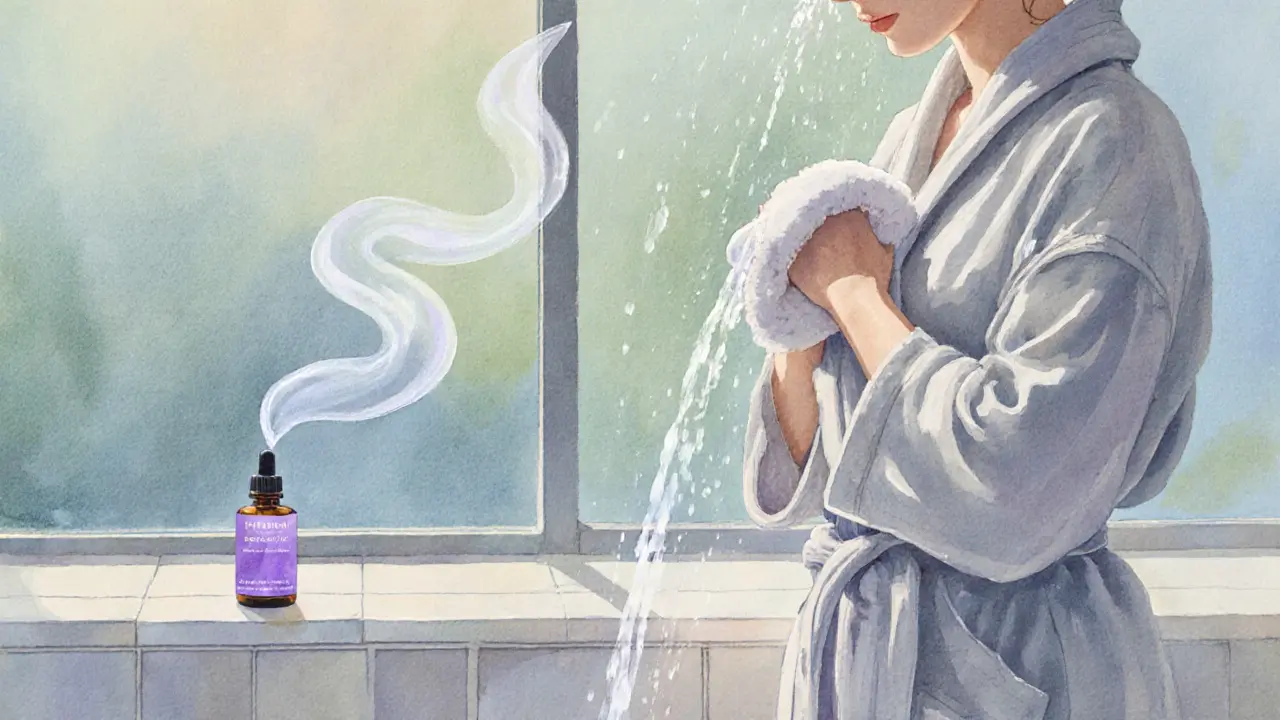After a soothing aromatherapy massage, you might wonder whether hopping in the shower will erase the benefits or boost them. The short answer is: it depends on what you want to keep, the oils used, and your body’s response. Below you’ll find a clear guide that walks you through the science, the practical pros and cons, and how to decide the best post‑massage routine for you.
Understanding the Basics of Aromatherapy Massage
Origins and History
Aromatherapy Massage is a therapeutic massage that blends traditional manual techniques with essential oils derived from plants. Its roots trace back to ancient Egypt, where priests used scented oils to calm the mind and heal the body. The practice migrated through Ayurvedic traditions and entered Western spa culture in the early 20th century, gaining popularity for its dual focus on physical manipulation and aromatic stimulation.
Core Principles or Components
The key components are:
- Essential Oils are highly concentrated plant extracts that evaporate quickly and can be absorbed through the skin.
- Massage Therapist applies pressure, strokes, and joint movements tailored to your needs, while carefully selecting oils that match your desired outcome.
- Skin absorption allows active compounds to enter the bloodstream, influencing the nervous and lymphatic systems.
How It Differs from Related Practices
Unlike a regular Swedish massage, aromatherapy adds the chemical and emotional layer of scent. Compared with a pure essential‑oil inhalation session, the massage delivers the oils directly into the skin, resulting in deeper systemic effects.
| Practice | Key Feature | Primary Benefit |
|---|---|---|
| Aromatherapy Massage | Manual manipulation + skin‑absorbed oils | Physical relief + aromatic therapy |
| Swedish Massage | Gentle strokes, no oils | Muscle relaxation |
| Oil Diffusion | Inhalation only | Mood enhancement |
Who Can Benefit from Aromatherapy Massage?
Anyone seeking stress relief, improved circulation, or a calming sensory experience can benefit. It’s especially popular among busy professionals, athletes recovering from training, and people with chronic tension headaches. However, individuals with severe skin allergies or certain medical conditions should consult a healthcare provider first.
Benefits of Aromatherapy Massage for Body and Mind
Stress Reduction
The combination of rhythmic strokes and soothing scents triggers the parasympathetic nervous system, lowering cortisol levels. Research from the National Institutes of Health (NIH) indicates that participants report a 30% reduction in perceived stress after a 60‑minute session.
Enhanced Circulation and Lymphatic Flow
Massage stimulates blood vessels, while certain oils (like rosemary or ginger) have mild vasodilating properties. This helps the Lymphatic System the network that removes waste and toxins from body tissues, promoting faster recovery and reduced swelling.
Emotional Well‑Being
Scents such as lavender and bergamot are linked to serotonin production, which can elevate mood and lessen anxiety. Clients often describe feeling a “mental reset” after a session.
Practical Outcomes
Beyond the immediate relaxation, regular sessions can improve sleep quality, reduce muscle soreness after workouts, and even support skin health by increasing blood flow.
| Benefit | Description | Impact |
|---|---|---|
| Stress Relief | Reduces cortisol via scent and touch | Calmer mind, better focus |
| Improved Circulation | Oil compounds + massage boost blood flow | Faster healing, warm skin |
| Emotional Balance | Neurochemical response to aromas | Elevated mood, less anxiety |
What to Expect When Engaging with Aromatherapy Massage
Setting or Context
Most sessions take place in a quiet, temperature‑controlled room with dim lighting. The Spa Environment provides a calm ambience, often with soft music and scented candles helps you settle into relaxation quickly.
Key Processes or Steps
- Consultation - the therapist asks about health history, scent preferences, and goals.
- Oil Selection - a blend is chosen (e.g., lavender for calming, eucalyptus for respiratory relief).
- Application - the therapist warms the oil in hands, then uses strokes, kneading, and sometimes gentle percussion.
- Wrap‑Up - light stretching or a brief period of quiet lying allows the oils to settle.
Customization Options
You can request stronger or milder aromas, adjust pressure levels, or add extra time for specific body parts. Some spas also offer heated stones or foot baths as add‑ons.
Communication and Preparation
Clear communication about any skin sensitivities, allergies, or medical conditions ensures a safe experience. Arriving a few minutes early lets you fill out a brief intake form.

How to Practice Proper Post‑Massage Care
Setting Up for Success
After the session, give your body a few minutes to rest. Keep the room temperature moderate (around 24°C) to avoid shocking your skin.
Choosing the Right Tools and Resources
Consider keeping a soft towel, a light‑weight robe, and a bottle of the same essential oil blend used during the massage. These help you extend the benefits at home.
Step‑by‑Step Guide: Shower or No Shower?
- Assess the Oil Type - Water‑soluble blends (like citrus) wash off easily, while carrier‑oil‑based blends (sweet almond, jojoba) are meant to linger.
- Timing - Wait 20-30 minutes after the massage before any shower. This allows the skin to absorb the active compounds.
- Temperature - If you decide to shower, use lukewarm water (around 35°C). Hot water can dilate pores too much, flushing out absorbed oils before they’ve done their job.
- Method - Gently rinse the areas that received heavy oil application. Avoid vigorous scrubbing; pat dry with a soft towel.
- After‑Shower Care - Re‑apply a light mist of the same essential oil if you enjoy the scent, or apply an unscented moisturizer to lock in moisture.
Following these steps helps you reap the therapeutic benefits while keeping hygiene intact.
Tips for Beginners or Couples
If it’s your first aromatherapy massage, try a mild lavender blend and skip the shower entirely. For couples, sharing the after‑care routine (like a gentle warm rinse together) can enhance bonding and extend the relaxation.
Safety and Ethical Considerations
Choosing Qualified Practitioners
Look for therapists certified by reputable bodies such as the International Aromatherapy and Massage Association (IAMA) or the American Massage Therapy Association (AMTA). Verify that they keep a clean, licensed practice space.
Safety Practices
| Practice | Purpose | Example |
|---|---|---|
| Wait Before Showering | Allow oil absorption | 20‑30 minute pause |
| Use Lukewarm Water | Prevent pore shock | 35°C water |
| Patch Test Oils | Identify allergies | Apply a drop on forearm |
Setting Boundaries
Always voice any discomfort during the massage. A good therapist will pause, adjust pressure, or change the oil blend.
Contraindications or Risks
Avoid aromatherapy massage if you have open wounds, severe eczema, or are pregnant without consulting a specialist. Certain oils (e.g., clary sage) are not recommended during pregnancy.
Enhancing Your Experience with Aromatherapy Massage
Adding Complementary Practices
Pair the massage with a short meditation or breathing exercise afterward. This deepens the calming effect and helps you transition back to daily life.
Solo vs. Group Sessions
Solo sessions focus entirely on your body’s needs. Group or couple sessions can turn the experience into a shared wellness ritual, strengthening emotional connections.
Using Tools or Props
Soft heated blankets, eye masks, or hydro‑rock salt lamps can amplify the sensory environment without interfering with oil absorption.
Regular Engagement for Benefits
Scheduling a session once a month maintains the balance of stress relief and circulation support. Consistency also lets you track how different oil blends affect your mood over time.

Finding Resources or Experts for Aromatherapy Massage
Researching Qualified Experts
Check online directories, read verified reviews, and ask for therapist credentials. In Dubai, many reputable spas list their therapists’ certifications prominently.
Online Guides and Communities
Websites like the National Association for Holistic Aromatherapy (NAHA) host free articles and forums where you can learn about oil safety and blend recipes.
Legal or Cultural Considerations
In the UAE, spa operators must adhere to Dubai Municipality health regulations, ensuring clean water supply and proper waste disposal of oil containers.
Resources for Continued Learning
- "Aromatherapy: A Comprehensive Guide" - a book covering blends for different moods.
- Video series by certified aromatherapists on YouTube.
- Local workshops hosted at wellness centers in Dubai.
Frequently Asked Questions
Should I shower immediately after an aromatherapy massage?
It’s best to wait 20‑30 minutes before showering. This pause lets the essential oils soak into the skin, delivering their therapeutic compounds. If you do shower, keep the water lukewarm and avoid harsh scrubbing.
What types of essential oils stay on the skin versus wash away?
Carrier‑oil blends (sweet almond, jojoba, grapeseed) are designed to linger and provide prolonged absorption. Water‑soluble citrus oils evaporate faster and are more easily rinsed off.
Can a shower diminish the stress‑relief benefits?
A gentle, lukewarm shower won’t erase the calming effect if you wait the recommended pause. However, a hot, vigorous shower can open pores excessively and wash away some of the oil’s active ingredients.
Is aromatherapy massage safe for pregnant women?
Pregnant clients can enjoy a massage, but they should avoid certain oils (like clary sage or rosemary in high concentrations) and opt for gentle pressure. Always discuss with a qualified therapist beforehand.
How often should I schedule aromatherapy massages?
A monthly session is a good baseline for most people. If you’re using it for specific goals-like muscle recovery after intense workouts-bi‑weekly sessions may be more effective.
Conclusion: Why Aromatherapy Massage Is Worth Exploring
Whether you decide to shower right away or let the oils work their magic, the core takeaway is simple: aromatherapy massage blends touch and scent to create a holistic sense of well‑being. By understanding how post‑massage care impacts absorption, you can tailor the experience to match your lifestyle.
A Path to Balanced Wellness
Integrating regular sessions into your self‑care routine can lower stress, boost circulation, and improve mood-benefits that extend far beyond the treatment room.
Try It Mindfully
Pay attention to how your skin feels, note any scent preferences, and experiment with the shower timing guide above. If you’re unsure, ask your therapist for a customized after‑care plan.
Share Your Journey
Have you tried a post‑massage shower? Drop a comment with your experience, or follow our blog for more wellness tips tailored to Dubai’s vibrant spa scene.
Disclaimer: Some links may be affiliate links, but all recommendations are based on research and quality.


La'Sherrell Robins
October 12, 2025 AT 14:52Yo, y’all gotta respect the oil, not just wash it off like a cheap soda bottle! 🌿💦 The vibe you get from essential oils is a gift from nature, so treating it with a rushed hot shower is kinda like trashing a masterpiece. If you’re all about self‑care, give those precious compounds 20‑30 minutes to soak into your skin-think of it as a love letter to your body. Skipping that window is basically saying “I don’t care” to your own wellbeing. 🙅♀️
Nick LoBrutto
October 12, 2025 AT 19:02Great rundown on the post‑massage timing; the step‑by‑step list makes it easy to remember the 20‑minute pause. I especially like the tip about using lukewarm water to avoid flushing out the oil too quickly. Keeping the skin’s pores from over‑reacting preserves the therapeutic compounds. It’s also smart to re‑apply a light mist of the same blend after the shower to lock in moisture. Overall, a friendly reminder that a little patience goes a long way.
Tatiana Pansadoro
October 12, 2025 AT 23:12Wow!!! This guide really covers everything- from ancient history to modern safety tips!!! 👍👍👍 The advice about waiting before showering is spot‑on; no one wants to waste those precious oils!!! Remember, a gentle rinse is better than a scrubbing marathon!!! Keep it mellow and enjoy the lingering scent!!!
Cynthia Farias
October 13, 2025 AT 03:22In contemplating the ritual of post‑massage hygiene, one is drawn to consider the dialectic between transience and permanence. The essential oil, once applied, becomes an emissary of botanical essence, seeking communion with the dermal membrane. To prematurely inundate this communion with a torrent of water is to interrupt a subtle negotiation of molecules. Patience, therefore, is not merely a recommendation but an ethical imperative toward oneself. The thirty‑minute interlude serves as a liminal space wherein the body assimilates the olfactory gifts. During this interval, neurochemical cascades are set in motion, influencing cortisol, serotonin, and autonomic balance. Such processes, invisible to the eye, demand respect akin to that afforded to any sacred practice. Moreover, the temperature of subsequent water must be calibrated; lukewarm conditions maintain homeostasis without provoking a vasodilatory shock. By honoring these parameters, the practitioner aligns with a tradition that spans millennia, from Egyptian priesthoods to contemporary wellness studios. The act of showering, when executed with mindfulness, transforms from a mundane cleanse into a ceremonial closure. In contrast, a hasty, hot shower reduces the ritual to a perfunctory act, stripping away the intended therapeutic linger. The philosophical import lies not in the mechanics of water, but in the intentionality behind each gesture. Thus, the post‑massage routine becomes a meditation on self‑care, wherein the body is both the vessel and the sanctum. One might argue that the lingering aroma functions as an olfactory mantra, reinforcing the tranquil state achieved during massage. Consequently, the decision to shower or abstain should be guided by a reflective assessment of desired outcomes rather than sheer convenience. In sum, patience, temperature, and intention coalesce to honor the alchemical bond between oil and skin, yielding a holistic benefit that transcends the physical.
Paul Addleman
October 13, 2025 AT 07:32Hey folks, think of the waiting period as a power‑up for your body-those minutes let the oils do their magic and you’ll feel the boost all day. Treat it like a small investment in your wellness; the payoff is a calmer mind and smoother muscles. Keep the water gentle, and you’ll keep the benefits rolling.